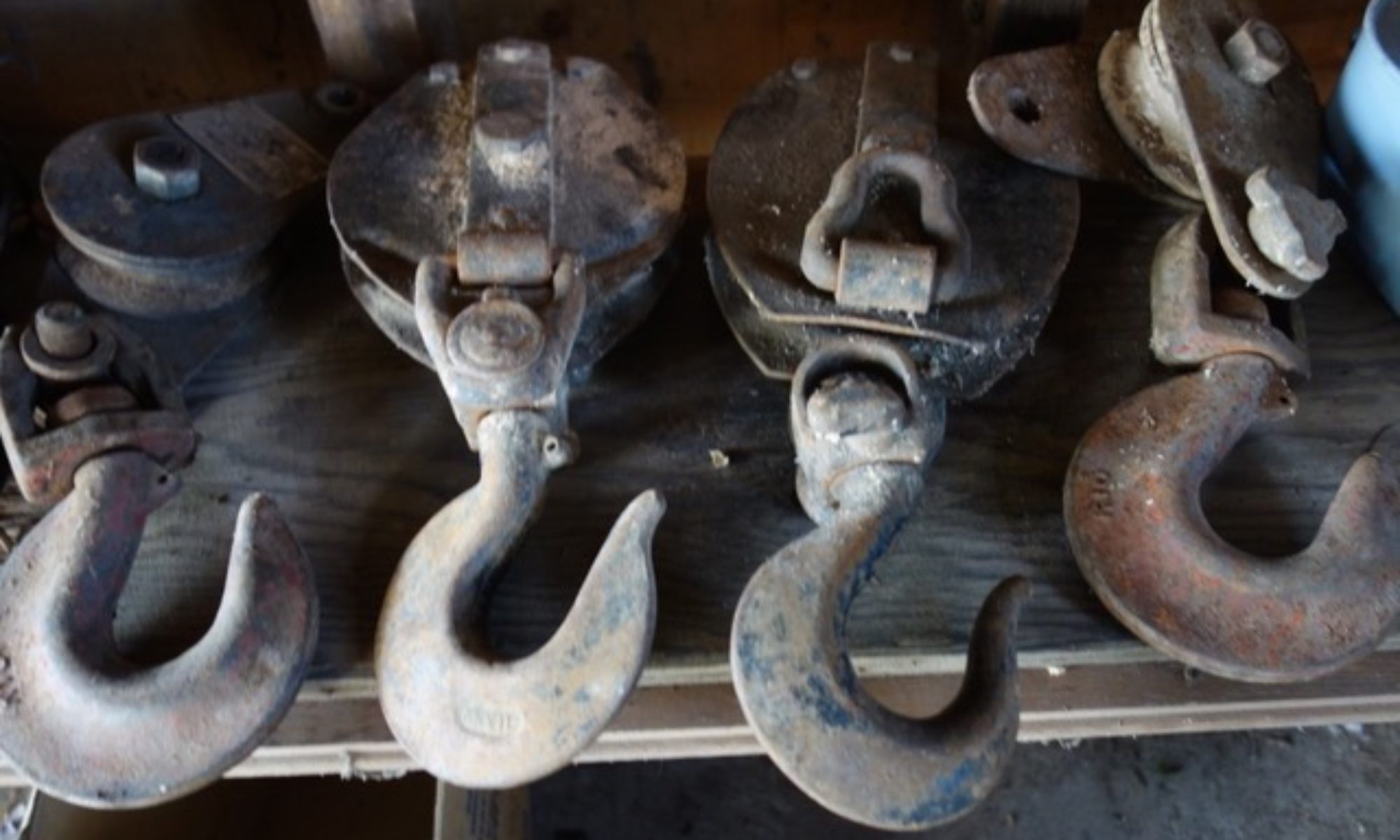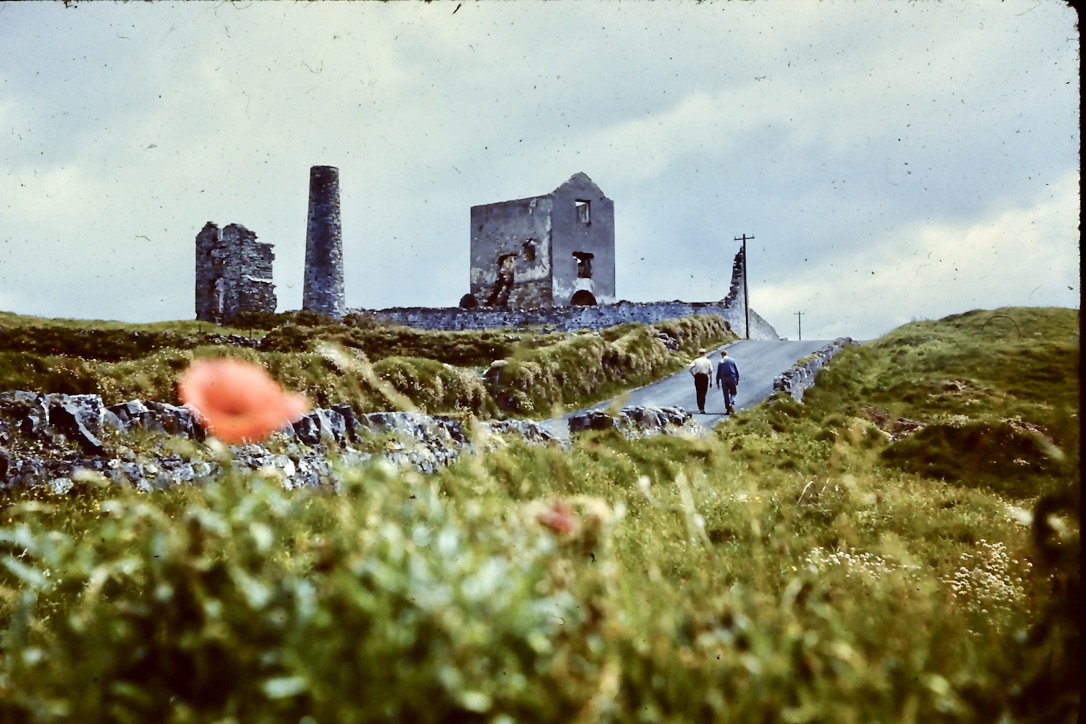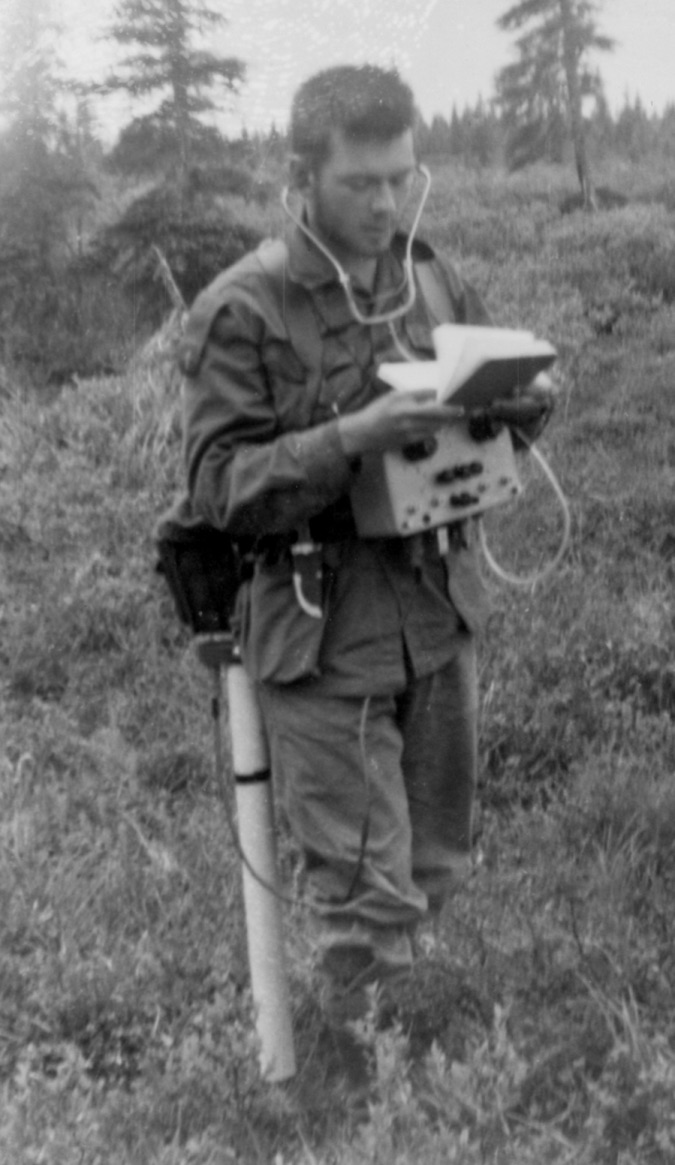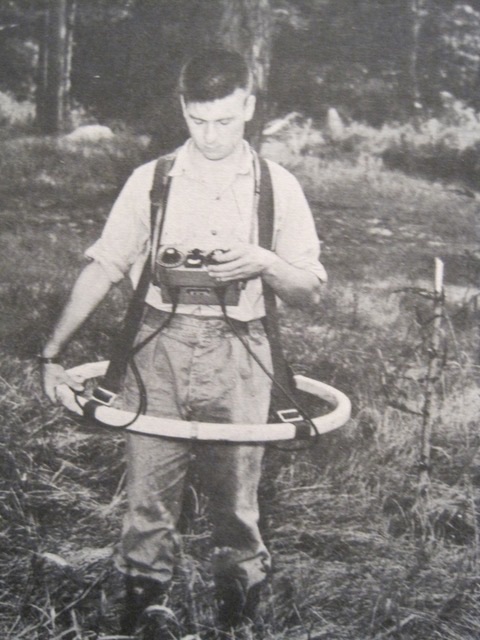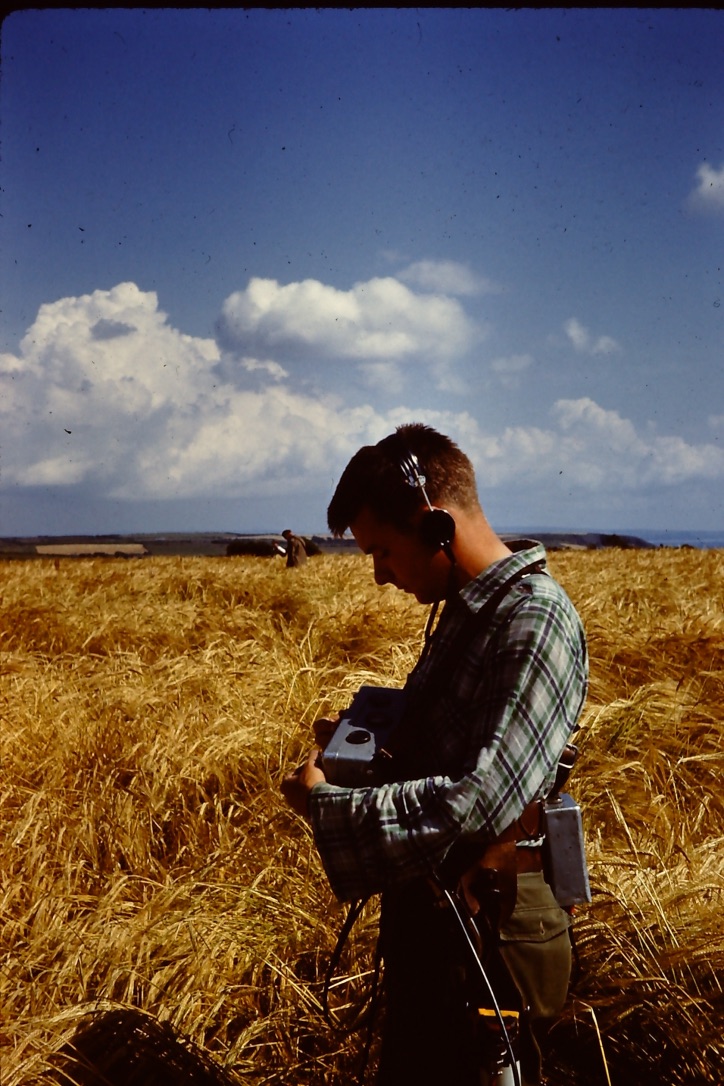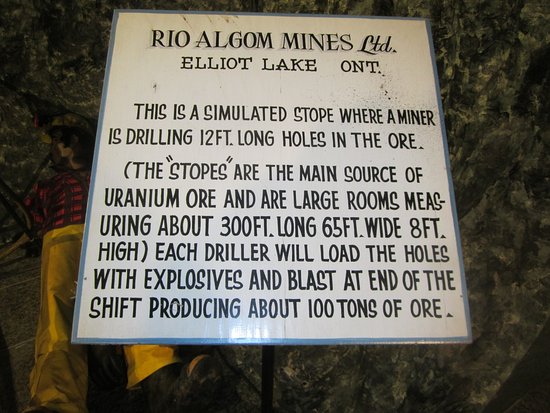Begin forwarded message:
From: ALAN SKEOCH <alan.skeoch@rogers.com>Subject: Re: EPISODE 84 WHAT WERE WE DOING AT THE BOTTOM OF AN ABANDONED URANIUM MINE AT ELLIOTT LAKE (MAY 1960)?Date: July 22, 2020 at 11:41:45 AM EDTTo: Marjorie Skeoch <marjorieskeoch@gmail.com>, Alan Skeoch <alan.skeoch@rogers.com>
EPISODE 84 WHAT WERE WE DOING AT THE BOTTOM OF AN ABANDONED URANIUM MINE AT ELLIOT LAKE (MAY, 1960)?alan skeochJuly 2020Note: For those of you who read my Episodes dealing with Bunmahon and mining experiences in Southern Ireland you
might find the days prior to my arrival in Ireland interesting. Underground at an abandoned uranium mine near Elliot Lake
in Northern Ontario. One of the largest source of uranium for atomic bombs in 1960. CAN. MET. mine.. A modern mine with electricity
and “cages” to drop a whole shift of miners from the surface of the earth down 2000 feet.
I decided to write this Episode and several others after I received a startling and very welcome email from Dan Dwan whose uncle
Barney Dwan was my right hand man in Ireland. Dan Dwan lives in Knockmahon, County Waterford, Ireland, today as do several of the men we employed.
Sixty years has passed yet that summer of 1960 remains alive.
The mine in Ireland would be totally different…see pic below.
For those of you who may find my language a little rough in places, all I can say is that I am trying
to record the Way We Were.
I JUST found this picture taken by Barney Dwan as we crawled through the old adits of the Knockmahoncopper mine on the south coast of Ireland. The picture is not relevant to the story below but should be includedin the Bunmahon stories. The contrast between Knockmahon mine (1840 – 1875) and the Can Met minein Elliot Lake (1955 – 1960, below) will be apparent. In Elliot Lake the passageways were big enough to drive large minetrucks. In Ireland, the miners had to squeeze through tight places.MY JOURNALMONDAY MAY 9, 1960University exams over on Friday May 7. Job started on Monday May 9. Each summer Ihoped to be re-employed by Hunting Technical and Explorations Servies because the jobswere so exciting even he work was always exhausting and living conditions far from luxurious sincemost jobs were in some god forsake corner of the world like last summer on the barren landsof western Alaska about 100 miles inland from the Bering Sea. From some points on that treelessArctic and sub Arctic shore. Desolate and infested with every blood sucking fly imaginable.So remote that we were armed with 30 – 06 rifles lest a Kodiak bear felt we were choice bitsof flesh. That never happened. Kodiak bears had lots and dead and dying salmon to gorgeupon and, anyway, I was told the bears thought we smelled bad which was believable sincebathing was not high on our agenda.Barrie Nichols met me at the office door on 1450 (?) Oconnor Road in East Toronto.“Alan, you will be going to Arizona on a job near the Mexican border…leaving this week.”“Snakes in Arizona?”“I suppose so…check out what to do if bitten if you wish.”“Right…says here that should a rattle snake bite you or a fellow crew member to makesure the wound is bleeding then suck out the blood and the venom…spit it out. Do not swallow.”“What if I am alone and the snake bites my leg?”“Could be tough problem.”“Might be best to hire Plastic Man (a comic book superhero in 1960) for the job, Mr. Nichols.”“Very funny.”Phoned home at lunch“Hi Mom, I will be going to Arizona this week…need bush clothes for hot weather.”“There are snakes in Arizona, Alan…bad snakes.”“Already prepared for that mom.” (Did not mention… blood, snake venom and sucking as a firstaid solution.)“They have hospitals down there.”Then Barrie Nicholls called me to his office in the afternoon.“Change of plans, Alan, you are not going to Arizona…sending Hilkar and Faulkner.”“Where am I going then?”“Southern Ireland.”“There are no snakes in Ireland…some religious guy drove them out…”“Very funny, Alan…but your are correct.”“No need practice blood sucking.”“What did you say…sorry I was not listening.“Noting important … When do I leave?”“Not sure yet…it will take a while to fill out the documents and crateup the equipment.”“What instrument will I be using?”“The Turam with a back up Ronka.”“Turam…same one we used in Alaska?”“Same one.”“Why me? Bill Morrison was the Turam expert.”“We don’t know where he is.”“And Don Van Every, Ian Rutherford, Mike Chinnery…all the Alaska crew.”“None of them around…just you. Do your remember how to use the Turam?”“Sure.” (said with a slight pause)“Dr. Paterson and I are counting on you Alan. It would be a good ideanot to mention to our contractor that you are a University student. Act likea permanent employee.”(Under my breath…”In other words be confident”…my interpretation.)“No worries.”“Dr. John Stam will be working with you…Phd. in Geophysics. Dutchman. He willdo the interpretation. All you have to do is get the raw material…the data…to him.”“Do I read you correctly Mr. Nichols…I will be in charge of the instrumentsand the field work.” (Wow, what a responsibility)“Right.”“Who will be working with me?”“Nobody…you will hire and train an Irish crew at Bunmahon…a villageon the south coast of Ireland.. We are counting on you , Alan.”“I know that…won’t let you down…do not worry.” (spoken with a confidenceI did not really feel.)“Now start carting up the gear…looks like 11 crates of equipment…get the crates madesomewhere…good strong crates for the ocean voyage.”“Do you mean I am going to Ireland by ship.?”“No you will fly…but the crates will travel by sea.”Later in the Afternoon of June 9, 1960“Hello Mom, I will not be going to Arizona.”“That’s a relief.”“Why?”“Because, Alan, there are no snakes in Ireland”Spent the rest of the afternoon signing documentsand arranging for my passport.TUESDAY MAY 10, 1960By chance I was sent on the Alaska job in 1959. My partner Bill Morrison was an expert who showed me how to set up the Turam E. M. unit.
I never expected to be the sole operator in 1960. Bill had gone on to other things. Lucky I made notes. Suddenly…those notes were crucial.
The Turam method is one of the oldest geophysical electro-magnetic methods used for mineral exploration, devised by Erik Helmer Lars Hedstrom in 1937.[1] Its name is derived from Swedish “TU” (two) and “RAM” (frame), referring to the two receiving coils.Method[edit]
An insulated cable a few hundred meters to several kilometers long is laid parallel to the geological strike direction. The cable is either grounded at both ends or laid out in a large loop, and energized at low frequencies (less than 1 kHz). Two receiving coils are moved on lines outside of and perpendicular to the long side of the loop or grounded cable and two components of the resultant field are measured. The primary field generated by the large loop or cable interacts with the soil and subsoil and with a conductive body if present which could be a mineral and creates a resultant electromagnetic field. The electromagnetic field is measured according to two values: the Field Strength Ratio and the Phase Difference occurring between the two receiving coils . It is a fixed source horizontal loop method. Separation of the two moving coils is usually from 10 to 30 metres. Using an AC bridge (also called compensator bridge), Field Strength Ratio is measured in percent and Phase Difference in degrees. In-phase (Real) and quadrature (Imaginary) values can be calculated from these data. Observed field strength ratio readings are used to calculate reduced ratios using a formula determined by the loop size and shape or the grounded wire length and the position of the receiving coils relative to the loop or grounded wire. The Turam method is a frequency domain method and in a way is the precursor of the time domain fixed loop methods. It is claimed to have detected large flat lying conductors to a depth of 400 metres.I will be expected to operate and set up both the Turam E.M. (electro magnetic) unitand the Ronka Electricial resistivity units. All the equipment must be ready for shipmentby boat to Ireland tomorrow….must with, measure, label, itemize everything and packin 8 crates. Crates no good though…need to get new crates built.Eric (brother) and I went to a movie in evening after getting Rev. Currie to authenticatemy passport application.I find it hard to believe that I will be going to Ireland. Others in the companymust be more qualified. Why me? Only explanation is that I am the only personleft who knows how to operate the Turam system.IRELAND…not so many flies to chew at our flesh…but there were lots of other difficulties.
All the same my job in Ireland in1960 was unforgettable…lots of good memories
WEDNESDAY MAY 11, 1960Picked up the Turam from Charley Houston and and new crates made.Two problems solved.Then Dr. Paterson called me over.“Alan, you will leave tomorrow for Blind River then on to Elliot Lake.”“Tomorrow?”“yes, a job at the bottom of a recently abandoned uranium mine calledCan Met.”“Abandoned? Uranium”“Are you are thinking of Atom Bombs,”“Yes.”“I suppose that is the end use of the uranium”“End use?”“Sounds sinister, ““Rather.”“Have you ever been deep in a mine before?”“No.”“Well, put this job down as a first.”Later I phoned Marjorie in North Bay. What a great girl. Then packed mybag for Elliot Lake after typing out list for Irish customs. Events are movingvery fast.(So on May 12, 1960, the same year I was sent to Ireland I was sent on a short job at Elliot Lake.The uranium mined at Can Met was enriched and inserted in metal casingsto become the atomic bombs that terrified so many of us during the long ColdWar between the Soviet Union and the Western World. By 1960, however,the need to stockpile atomic nuclear weapons had come to an end. There wereenough nuclear bombs on both sides by 1960, enough to destroy human andanimal life on the whole planet.)A great adventure was unfolding … with the speed of summer lightning. In a few weeks I would find myself underground crawling on mystomach through an ancient adit on the south coast of Ireland. What a contrast between the two mines. Elliot Lake Uraniium minewas big enough for huge machines to drive down the passageways. Knockmahon was so small that sometimes the hole wasbarely big enough to squeeze through. Was I scared? Strangely, I never gave that much thought except when I asked Barney Dwanto take my picture (above) at Knockmahon later in the summer of 1960.THURSDAY MAY 12, 1960I nailed the last crate closed today and then began reading the Ronka manual. Must know what I am doing when weget to Ireland and best place to do that is the Manual…if I can understand it all. Sass Casper left for a survey jobat Niagara. Eric and dad drove me today. This is the third day that I have had no time for lunch or even a coffee…and Ihave only been working for three days.In the evening I went to Scouts and Scouter presented me with my Ramblers Badge. The guys in the Rover Crewpresented me with a rosary for protection in Ireland then mom and dad drove me down to Union Statonto catch the train to Blind River.FRIDAY MAY 13, 1960Passed a wonderful night in my birth on the train just looking out the window watching the world by. Really exciting…alwaysan adventure. Awakened at 8 a.m. for a sumptuous breakfast in the dining car. In other words bacon, eggs, toast, marmaladeand coffee. Stopped for a few minutes in Sudbury…city looks depressing. Just bare stretches rock wiht little vegetation. Could bethe face of the moon. Continued to read the Ronka manual. Then we arrived at Spragge where I got off the train and tooka bus to Elliot Lake.Uranium mining has fallen on tough times. I guess the American have made enough atomic bombs now which meansour uranium market has collapsed. Very depressing city. Once it was a boom town of 10,000 people…the place to be…the place wherejobs were easy to find and the money good. Housing was so hard to get that some miners slept in their cars. Most were singlemen, many of them recent immigrants. Others were familiar with the nomadic life of miners. At least one man livedin a tent with his wife and five kids. Boom town in 1958. Bust town in 1960. On May 13,1960, all I could see was abandoned trailer camps, cars strippedof anything valuable like tires, and fields here and there of repossessed vehicles. Strange how modern buildings with glassand aluminum fittings looks so depressing when empty.Proceeded with geologist John Hogan to Can. Met. Uranium mine three miles outside Elliot Lake. Originally Can Metemployed 1,000 men but today it just has a skeleton staff of 70 to keep the place open. Maybe even those men arejust here until we complete our underground survey. We have our meals in a huge mess hall …big enough forthe huge work force that once ate here with meals cooked and served by Crawley and McKraken food services asthe sign said.. Not anymoreTested the Ronka and did some map work.
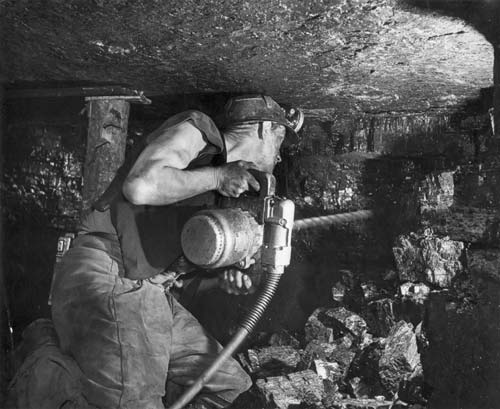
Take the time to read the sign. Stopes in Eliot Lake were huge…300 feet long, 65 feet wide and 8 feet high.
The underground workshop at Can Met looked the size of football field. The passageways were high enough
for trucks and wide enough for those trucks to pass each other.
SATURDAY MAY 14, 1960This rant style lodge was built for Can Met executives but rarely used. We lived there for our time at Can Met. See interior belowCAN. MET. uranium mine cost 25 million dollars to open in the late 1950’s and it closed in 1960having never made a profit. Investors in mining stocks are often led by flattering prospects of greatwealth that never ‘pans out’ …a gold mine expression. In other words greed has a lot to do withfinancing mines.The mine was shut down when we arrived. Silent. Even the huge lumbering ‘cage’ which woulddrop us down the shaft for our 8 to 12 hours shifts. Sad…a bit frightening.
END EPISODE 84
NEXT EPISODE 85…UNDERGROUND AT “CAN MET” URANIUM MINE…AS IT BEGINS TO COLLAPSE
Post Script
My original thought was to just do an Episode on Mining Cages like
the one pictured below. Maybe I will do that as well. These are not
Eliot Lake miners. Just miners in a very dangerous cage. Sometimes
mining jobs were taken out of desperation. Good pay on the other
hand. But a nomadic lifestyle since all mines have a shelf life…except
it seems for Sudbury, Ontario, Canada.

